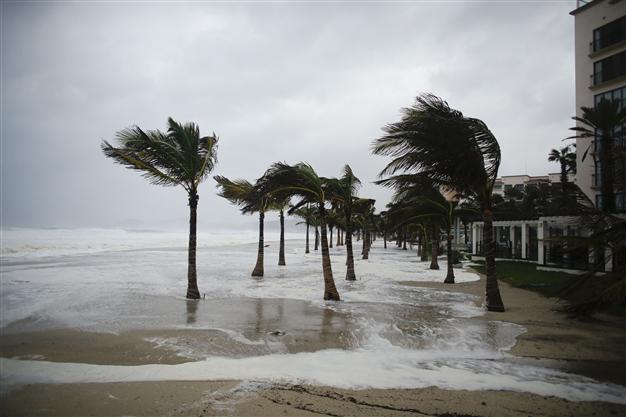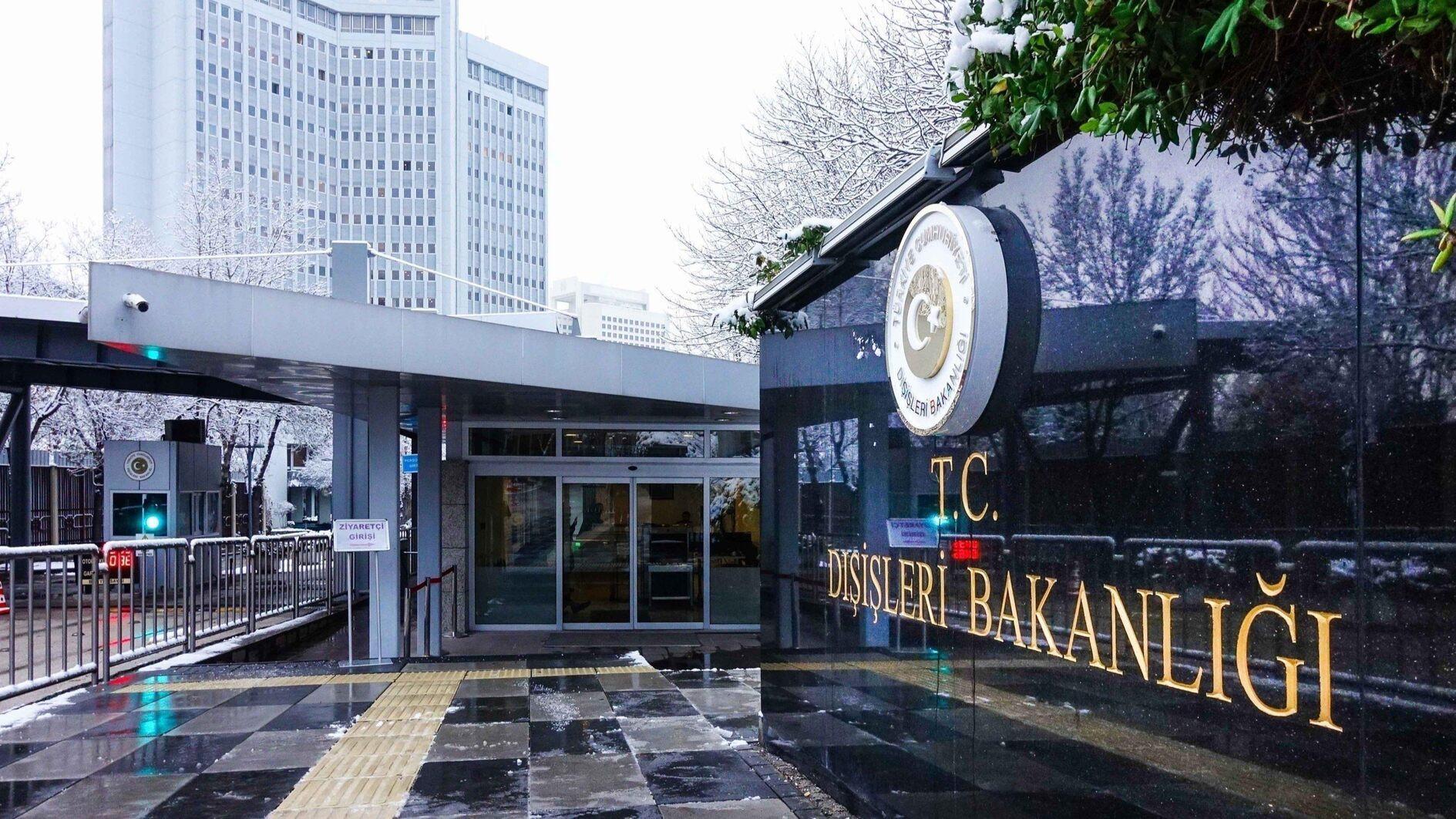'Dangerous' hurricane hits Mexico Pacific resorts
CABO SAN LUCAS, Mexico - Agence France-Presse

Winds blow palm trees on the beach in Los Cabos, Mexico, Sunday, Sept. 14, 2014.
Hurricane Odile crashed into northwestern Mexico's Los Cabos resorts on Sunday, taking down trees with powerful winds as thousands of tourists hunkered down in luxury hotels converted into shelters.The "dangerous" category three storm in the five-level Saffir-Simpson scale packed 205-kilometer per hour winds when it made landfall near Cabo San Lucas in the late evening, according to the US National Hurricane Center.
The storm took down trees, power lines and roof tiles as it arrived in the Baja California peninsula, said National Civil Protection coordinator Luis Felipe Puente.
Forecasters warned that heavy rains could produce life-threatening floods and mudslides.
Some 26,000 foreign tourists and another 4,000 Mexicans were staying in 18 hotels converted into temporary shelters, officials said.
"It took us by surprise. The sea is rough. I think this is going to get very ugly," Steve Clement, a surfer from Hawaii, told AFP.
Some 7,000 residents were evacuated from low-lying areas and took refuge in shelters or with relatives, Felipe Puente told Foro television.
Operations at Los Cabos International Airport were suspended.
Authorities cut power in Cabo San Lucas to prevent electrocutions while officials said schools would close on Monday and independence day festivities would be called off.
Hundreds of troops were deployed to help the population.
"The tourists are not panicking," said Daniel Manzini, assistant manager at the Hyatt Place hotel in San Jose del Cabo, which was nearly full. "The hotel is safe and can be converted into a shelter." Gordon Peter, a 65-year-old US tourist, had been in Los Cabos for week when his flight home was canceled on Sunday.
"I'm not afraid but I want to go home," he said. "I'll spend the night in the lobby of my hotel. I could not find another hotel room."
The hurricane had grown to category four strength earlier in the day before weakening, and little change in strength was expected following fears it could grow even bigger.
It was moving north-northwest at 28 kilometers per hour.
Calling Odile a "highly dangerous" hurricane, National Water Commission director David Korenfeld said a weather alert was issued for the entire peninsula for at least the next 24 hours.
After landfall, the hurricane was expected to gradually weaken as it moves over or along Baja California's coast through Tuesday.
The hurricane was expected to produce a dangerous storm surge, with large destructive waves, which could produce significant coastal flooding in parts of Baja California.
A total of 15 to 30 centimeters of rainfall were predicted in the peninsula and were likely to spark "life-threatening flash floods and mudslides," forecasters said.
The hurricane hit the Pacific coast around the one-year anniversary of a twin tropical storm battering on both coasts that left 157 people dead.
















